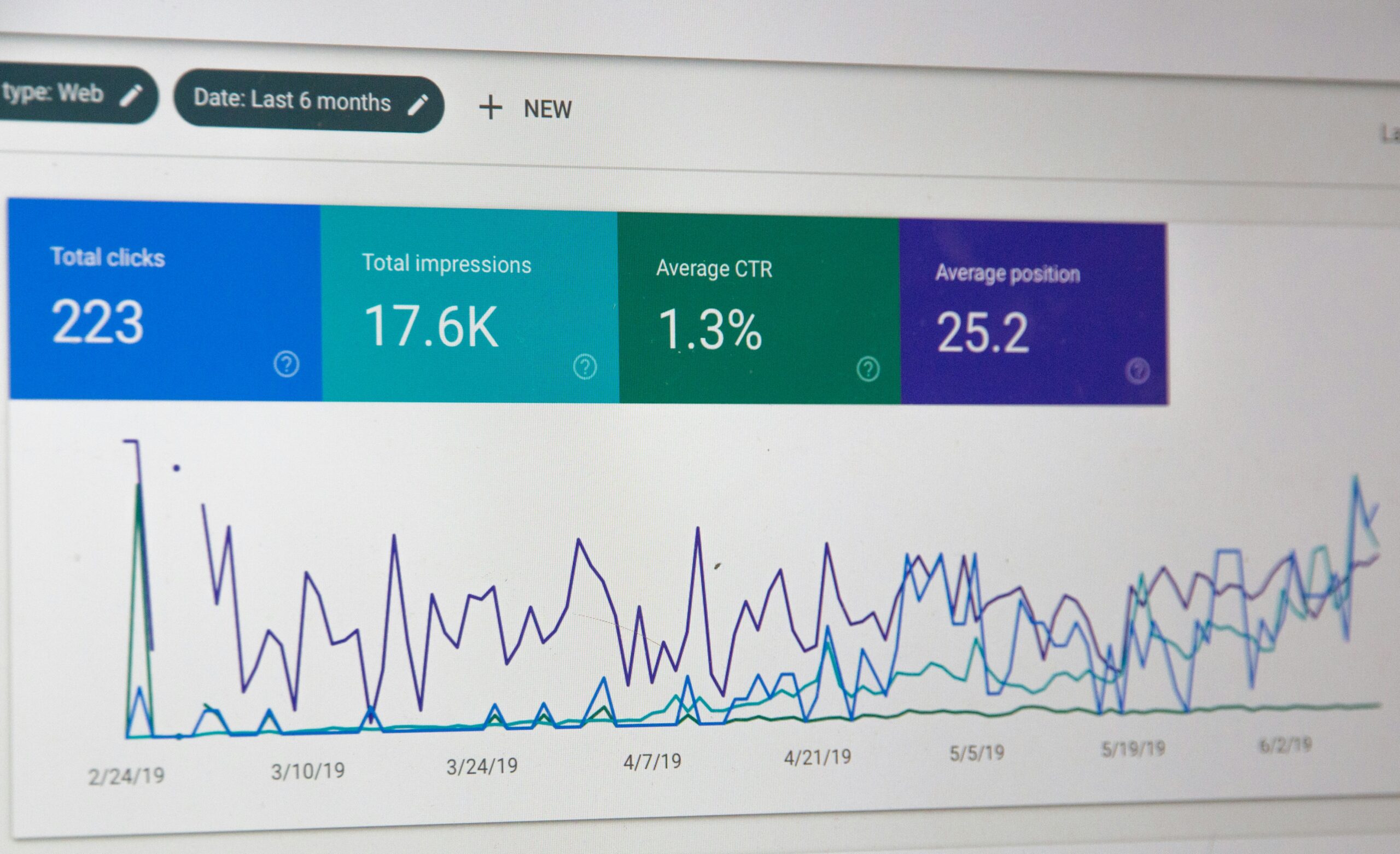This comprehensive guide will detail how superior UX design, streamlined navigation, optimized forms, and trustworthy credibility can significantly enhance conversion rates. Readers will learn about actionable strategies, backed by real-world case studies and performance metrics, to help refine and test UX initiatives. Moreover, focusing on the interplay between user behavior and website design, this guide outlines how to align UX goals with overall conversion objectives. By addressing the essential elements of site navigation, content, design, interactive elements, and trust signals, businesses are empowered to create a digital experience that not only delights users but also drives measurable growth.
Key Takeaways
- A superior user experience increases conversion rates by reducing friction and enhancing user engagement.
- Streamlined navigation, effective content design, and optimized interactive elements are key aspects of a high-performing site.
- Building trust through clear value propositions and social proof significantly improves conversion outcomes.
- Regular testing and iterative design adjustments based on user feedback help sustain long-term conversion improvements.
Understanding Core Connections Between User Experience and Conversion Rates

User experience plays a pivotal role in guiding visitors toward desired actions. A seamless experience ensures users interact with your content intuitively, boosting engagement and satisfaction. Clear design, responsive navigation, and fast-loading pages build trust and reduce bounce rates. When users feel understood and supported throughout their journey, they’re more likely to convert. Optimizing the experience with data-backed decisions transforms interest into action.
Defining Superior User Experience for Your Audience
Superior user experience isn’t merely about attractive design; it is about crafting an environment where users can find information effortlessly, complete tasks quickly, and feel emotionally connected to the brand. For example, websites that integrate smooth animations, responsive design, and accessible content tend to witness longer engagement times. Additionally, superior UX accounts for diverse user preferences by incorporating customization options and accessibility features such as screen readers and adjustable layouts. Implementing these features not only caters to an inclusive audience but also improves the overall usability and satisfaction, ensuring that the digital experience directly drives conversions.
How Positive User Interactions Directly Influence Conversion Numbers
Every interaction a user has on a website influences their perception of the brand and their willingness to convert. Smooth, responsive experiences give users confidence and reduce hesitation. When interfaces respond quickly and predictably, users feel empowered to take the next step. From click to scroll, consistency and clarity promote trust. A website that behaves intuitively helps drive users closer to conversion outcomes.
Recognizing Poor UX Signals That Harm Conversion Potential
Poor UX creates frustration that stops users from completing important actions. Slow load times, hard-to-read text, and confusing layouts create barriers that cause users to leave. Too many form fields or unclear buttons increase friction. These interruptions add to user fatigue, decreasing the likelihood of staying engaged. Addressing these weaknesses improves clarity and usability, encouraging a smoother, more goal-oriented journey. Eliminating distractions lets the user focus on action. Better flow and responsiveness prevent abandoned sessions. A refined interface simplifies decisions and reduces confusion. Over time, these changes lead to stronger user confidence and improved performance.
Aligning UX Strategy With Conversion Goals
Effective UX aligns with business goals by moving users naturally through the conversion funnel. Nurture Machines specializes in creating automated systems that guide leads through this journey, ensuring each touchpoint builds trust and encourages action. Every touchpoint should support user intent while reinforcing trust and value. Clear structure, helpful content, and responsive features guide users toward action without friction. When UX is built to match conversion goals, it enhances revenue and satisfaction. Well-executed UX keeps the business and user priorities in sync.
Streamlining Site Navigation for Better User Experience and Conversion Rates

Navigation is a core component of a high-performing website. If users can’t find what they need quickly, they’re likely to leave. Easy-to-follow menus and internal links reduce confusion and keep users moving in the right direction. An organized structure improves satisfaction and supports user confidence. Well-designed navigation ultimately leads users toward contact, purchase, or signup pages more efficiently.
Designing Intuitive Menus and Information Architecture
A strong site menu organizes content in a logical, easy-to-understand format. This structure should reflect user intent, prioritizing clarity over complexity. Grouping content by themes or actions makes it easier to find relevant pages. Icons, labels, and spacing should remain consistent for predictability. Clear labels prevent second-guessing, keeping users in control of their journey. By minimizing decision fatigue, intuitive menus increase engagement and reduce abandonment. Reinforced visual hierarchy helps users understand where they are. This streamlined approach boosts conversion rates by providing frictionless access to what matters most.
Implementing Effective Internal Linking Strategies
Internal links help guide visitors across important pages within a site. Linking strategic content together gives users helpful pathways that increase time on site. These links should feel natural within the content and be placed where users are likely to want more. A well-linked page structure supports better exploration and reinforces site relevance. Connecting high-conversion pages to informative ones keeps users engaged. Strong internal linking encourages progression toward action. Users who stay longer and view more pages often show stronger intent to convert. These links form bridges between interest and commitment.
Optimizing on-Site Search Functionality for User Success
Optimizing on-site search functionality is another pivotal factor for improving user experience. Users often rely on the search feature to bypass less intuitive navigation menus and directly access the content they need. An effective search function employs auto-complete, semantic search algorithms, and clear result categorization to enhance usability. Data indicates that when the search experience is smooth and returns relevant results swiftly, the likelihood of conversion increases significantly. For example, a well-optimized search function that reduces search time by even a few seconds can enhance customer satisfaction and reduce bounce rates. This optimization should be coupled with regular assessments and user feedback to ensure that search results remain aligned with evolving user queries and content updates.
Ensuring Clear Pathways to Conversion Points
Ensuring that every navigational element directs users efficiently toward a conversion point is fundamental to boosting conversion rates. Clear pathways involve highlighting essential elements such as ‘Buy Now’ buttons, contact forms, and subscription prompts that are consistently positioned throughout the site. Visual hierarchy plays a key role here; high-contrast colors, ample white space, and prominent CTAs naturally draw the user’s attention. Studies suggest that websites that actively guide users with clear conversion pathways witness conversion rate improvements upward of 25%. By creating a seamless flow from page entry to final action, the site not only enhances user satisfaction but also directly contributes to higher sales and lead acquisitions.
Enhancing User Experience to Boost Conversion Rates Through Content and Design

Content and design are two interrelated components critical for driving conversions. Crafting engaging content and applying sound design principles can deeply affect a user’s motivation to take desired actions. When these aspects are perfectly integrated, websites create a dynamic and immersive experience. This section outlines the importance of authoritative content that guides users through their journey, combined with a visual hierarchy that enhances engagement and reinforces clear calls-to-action (CTAs).
Crafting Compelling Content That Guides Users
Compelling content is at the heart of effective web experiences. The answer to how content influences conversion rates is straightforward: quality content clarifies value propositions and sets clear expectations for the user. High-quality, informative content addresses visitor pain points, answers relevant queries, and includes strategic placements for CTAs. Detailed content that explains product features, benefits, and supports these claims with statistics, case studies, and testimonials builds credibility. For example, a blog post detailing success metrics—like a case study showing a 30% increase in revenue post-UX improvements—can be highly persuasive. Compelling content coupled with storytelling not only informs users but also emotionally engages them, facilitating a smoother journey toward conversion.
Utilizing Visual Hierarchy for Improved Engagement
Visual hierarchy is the strategic arrangement of design elements to signal importance and facilitate readability. By employing techniques such as size, color, contrast, and position, a website can direct users’ attention to critical areas such as CTAs or key value propositions. Studies have shown that websites optimized with a clear visual hierarchy achieve user engagement levels that are 20% higher than their counterparts. In practice, large headlines, subheadings, and strategically placed images create an information architecture that simplifies user navigation. When every visual element is purposefully placed, users experience reduced cognitive load, making it easier for them to absorb content and proceed toward conversion points.
Ensuring Readability and Accessibility Standards
Readability and accessibility play a critical role in enhancing user experience. Clear typography, well-spaced text, and high-contrast color schemes not only improve readability but also ensure that content is accessible to users with disabilities. An accessible website meets or exceeds the Web Content Accessibility Guidelines (WCAG), ensuring that it serves a broader audience. Sites that prioritize accessibility can maintain higher engagement metrics and lower bounce rates, which directly correlate with improved conversion rates. For instance, using legible fonts and appropriate contrast ratios makes information consumption easier and more enjoyable. Additionally, providing alternative text for images and ensuring that interactive elements are keyboard navigable fosters an inclusive experience that resonates with all visitors.
Optimizing Page Load Speed for User Retention
Page load speed is a critical performance indicator within UX and conversion optimization. Users expect pages to load quickly—ideally under three seconds. Slower pages lead to impatience and a high probability of bounce, negatively impacting conversion rates. Techniques such as image compression, script optimization, and server enhancements should be employed to maintain swift load times. Studies have shown that each additional second in load time can reduce conversion probability by up to 7%. Optimized page performance not only keeps users engaged but also positively impacts search engine rankings, further driving organic traffic that is more likely to convert.
Designing Persuasive Call-to-Action Buttons
Clearly designed call-to-action buttons are one of the most direct ways to improve conversion rates. A persuasive CTA combines strategic wording, contrastive colors, and prominent placement to nudge users toward a specific action. For instance, rewording a generic “Click Here” to a benefit-focused “Get Started and Boost Your Sales” can significantly improve click-through rates. Empirical data indicates that optimizing CTA design can lead to conversion improvements as high as 15–20%. By ensuring the language and placement of these buttons align with user expectations and the overall aesthetic of the site, businesses provide a frictionless path that encourages immediate action and drives conversions.
Optimizing Forms and Interactive Elements for Higher Conversion Rates

Forms and interactive elements are often the final touchpoints before conversion—and optimizing these moments is crucial. Nurture Machines’ automated workflows adapt communication based on user behavior, ensuring even form interactions are personalized and timely. Whether it’s a lead capture form or a feedback prompt, simplicity and responsiveness make the difference. Optimized forms reduce friction, prevent abandonment, and keep users moving toward action. Clear error handling, responsive layouts, and minimal fields create a seamless experience across devices—directly improving conversion performance.
Simplifying Form Fields to Reduce User Friction
The principle behind form simplification is that the fewer the fields, the higher the likelihood that a user will complete the process. Research indicates that forms with fewer than five fields can improve conversion rates by up to 50%. A streamlined form should eliminate unnecessary questions and only collect essential information. For instance, instead of asking for a full mailing address, a simple email and phone number might suffice to initiate contact. Simplification not only speeds up the completion process but also enhances user satisfaction, as it clearly respects their time and effort. Techniques such as progressive profiling and inline validation can further optimize the experience, ensuring that even advanced forms remain user-friendly and efficient.
Providing Clear Feedback and Error Handling
Effective feedback mechanisms and error handling are crucial for keeping users on track during form interactions. When users receive immediate confirmation that their input is acceptable, or clear error messages when corrections are needed, the process feels more reliable and less frustrating. For example, a simple message like “Looks good!” with a green checkmark or a red error message that instructs, “Please enter a valid email address,” creates an interactive dialogue between the user and the website. This transparency builds trust and minimizes abandonment, as users are less likely to feel lost or frustrated during the process. Clear feedback mechanisms ensure that each stage of the form is intuitive and responsive, ultimately guiding users seamlessly toward form submission and conversion.
Making Interactive Elements User-Friendly Across Devices
Interactive elements such as sliders, dropdown menus, and buttons must work seamlessly across desktops, tablets, and mobile devices. Adaptive design principles ensure that these elements are equally effective irrespective of screen size or device type. Data reveals that mobile-optimized interactive elements can boost conversions by a significant margin, particularly as mobile traffic becomes dominant. By prioritizing responsive design, companies ensure a consistent experience that reduces user friction on any platform. Interactive components should also adhere to best practices in accessibility and usability testing, ensuring that everyone, from tech-savvy users to novice visitors, can interact with the website confidently. This cross-device consistency is critical to maintaining engagement and converting users who access the site using different technologies.
Streamlining Checkout Processes for E-Commerce Success
In e-commerce environments, the checkout process is the final barrier between interest and transaction. A complex or lengthy checkout process can cause significant drop-offs—studies report cart abandonment rates of up to 70% when users encounter difficulties. Simplifying the checkout process involves reducing the number of steps, offering guest checkout options, and providing comprehensive progress indicators that inform users how many steps remain. Additionally, clear pricing, transparent shipping information, and secure payment gateways contribute to a smoother checkout experience. By using trusted icons and security signals, businesses reassure users about data privacy and payment safety, thus encouraging completion of the purchase process. Streamlined checkout experiences have been shown to improve conversion rates by minimizing friction at the final purchase stage.
Building Trust and Credibility to Improve User Experience and Conversion Outcomes

Building trust and credibility is integral to converting casual visitors into loyal customers. Nurture Machines supports this by automating relationship-building through personalized content and intelligent follow-up campaigns—helping businesses position themselves as helpful advisors rather than aggressive sellers. Without trust, even the best-designed website will struggle to convert, as users are far more likely to engage with brands that feel reliable and transparent. This section explores practical strategies to build trust using social proof, clear communication, and visual trust signals. When users perceive a brand as secure and genuinely invested in their experience, conversion rates naturally rise.
Displaying Social Proof and Testimonials Effectively
Social proof is a psychological trigger that drives customers to trust your brand based on the experiences of others. Displaying customer testimonials, case studies, and trust badges directly on your website affirms the value and reliability of your offerings. Studies have indicated that including positive testimonials increases conversion rates by over 30%. When users read about the success stories and recommendations from real customers, they are more likely to feel confident in making a purchase. Implementing social proof can be as simple as featuring a rotating carousel of customer reviews or offering video testimonials that authenticate positive real-world experiences. In addition, badges from recognized certifications or awards further bolster the site’s trustworthiness and can directly impact conversion metrics.
Ensuring Website Security and Privacy Signals
The assurance of security and privacy is indispensable for fostering trust in online environments. Visitors are very cautious when sharing personal and financial information, so displaying security logos (such as SSL certificates, secure payment icons, and privacy policy links) can have a significant positive effect on user confidence. Websites that make it abundantly clear that user data is protected tend to see a 25–40% improvement in conversion rates. Furthermore, ensuring compliance with global data protection regulations, such as GDPR, and prominently displaying privacy policies can mitigate user concerns about data misuse. In essence, a secure and transparent site is not only favorable for user experience but also drives conversions by reassuring visitors that their sensitive information is in safe hands.
Communicating Value Propositions Clearly
Effective communication of value propositions is key to convincing users why they should choose your product or service over competitors. Clear, succinct messaging that highlights unique selling points and tangible benefits builds a strong foundation of trust. For example, a value proposition stating “Increase your ROI by 35% through our simplified UX design strategies” immediately communicates specific benefits that are backed by data. This clear articulation of benefits, paired with real-world examples and success metrics, creates a persuasive argument for conversion. Messages should be concise and prominent throughout the site, ensuring that potential customers never have to search for key selling points, thereby driving higher engagement and conversion outcomes.
Offering Transparent Contact and Support Options
Lastly, giving users easy access to transparent contact and support options further solidifies credibility. Offering multiple channels—such as live chat, email support, and phone lines—demonstrates that the business is both approachable and responsive. Transparency in communication reassures users that their queries will be handled swiftly and effectively, a factor that can tip the scales in favor of conversion. Detailed contact information, including physical addresses and social media links, further boosts trust by showing that the company is genuine and accessible beyond the digital realm. Ultimately, robust support options integrate tightly with a positive UX, reducing perceived risk and driving conversions by ensuring that help is always at hand.
Testing and Refining UX Based on User Behavior for Ongoing Conversion Rate Improvement

Continuous testing and refinement of user experience based on observable user behavior are essential for maintaining high conversion rates in an ever-changing digital landscape. An agile approach that integrates A/B testing, user analytics, and iterative design changes allows a company to adapt and improve its digital offerings. This section explains how leveraging data-driven methods can lead to ongoing improvements in UX that directly impact conversion outcomes. By closely monitoring user interactions and gathering actionable feedback, businesses can systematically identify areas of friction and implement targeted interventions that yield improved user satisfaction and higher revenue.
Implementing A/B Testing for Key User Experience Elements
Implementing A/B testing is a proven strategy for optimizing user experience elements. A/B testing involves comparing two versions of a webpage or element to determine which one performs better in terms of user engagement and conversions. For example, testing different CTA button colors, placements, or wording can reveal which variation leads to a higher click-through rate. Studies have suggested that well-executed A/B tests can improve conversion rates by over 15–25%. Continuous A/B testing allows companies to experiment, analyze results, and implement the most effective design choices. These controlled experiments help in making data-backed decisions that directly influence user satisfaction and conversion performance.
Analyzing User Feedback and Behavior Analytics
Analyzing user feedback and behavior analytics is essential for understanding how visitors interact with your site. Tools such as heatmaps, session recordings, and user surveys provide deep insights into areas where users experience friction or disengagement. By systematically reviewing these insights, companies can identify common patterns and focal points for improvement. For instance, if analytics reveal that a significant percentage of users abandon a specific form field, that field can be redesigned or eliminated to streamline the process. Regular analytics reviews also help in monitoring key performance indicators (KPIs) like average session duration and bounce rate, offering a granular view of the user journey and directly guiding modifications that improve conversion outcomes.
Iterating on Design Based on Performance Data
Iteration on design based on performance data is at the heart of modern UX optimization. Rather than viewing website design as static, continuous improvement strategies allow businesses to adapt their interfaces to better meet user expectations. Each iteration—whether it involves tweaking the layout, refining the content, or adjusting interactive elements—should be driven by quantifiable performance metrics. For example, data showing an increase in page abandonment can lead to a redesign that shortens the checkout process. This iterative process ensures that a website evolves with user behavior and market trends, ultimately resulting in sustained or improved conversion rates. Emphasizing iterative design fosters an environment of perpetual enhancement that is crucial for staying competitive in a dynamic digital marketplace.
Monitoring Key User Experience and Conversion Rate Metrics
Monitoring key UX and conversion rate metrics is the final step in ensuring that improvements are both effective and sustainable. Key metrics such as click-through rates, form completion rates, average session duration, and overall user satisfaction scores provide a comprehensive picture of the website’s performance. Regularly reviewing these metrics allows businesses to understand the impact of UX enhancements and adjust strategies promptly. A balanced dashboard that consolidates these performance indicators can help stakeholders stay informed and agile. Ultimately, constant monitoring is what ensures that the digital experience continues to evolve in response to user demands and that conversion rate optimization remains a priority.
Frequently Asked Questions
How does a streamlined user experience improve conversion rates?
A streamlined user experience removes barriers by creating intuitive navigation and minimizing distractions across digital touchpoints. By simplifying the user journey and ensuring every step aligns with intent, visitors are more likely to complete desired actions. Nurture Machine’s approach ensures that design, content, and structure support seamless interactions. This clarity boosts user confidence and engagement. When users can act without confusion, conversions increase naturally. Every part of the journey is mapped for frictionless flow. The result is an efficient, satisfying experience that supports lead generation and retention.
What are some examples of effective internal linking strategies for higher conversions?
Effective internal linking guides visitors toward high-converting destinations without overwhelming them. Nurture Machine helps structure contextual links within blogs, strategic CTAs in service pages, and logical pathways in footer or header menus. This reinforces user intent and keeps them engaged. Smart linking turns passive browsing into purposeful movement. It also improves time on site and supports SEO strategies. Visitors naturally progress from awareness to action. Strong internal pathways reduce bounce rates and enhance trust. Every link supports the bigger goal: guiding users toward conversion-ready pages.
Why is website security critical to user experience and conversion outcomes?
Website security builds the trust users need before submitting personal data or making purchases. Nurture Machine ensures SSL encryption, compliance with data regulations, and visible security cues on every page. This reduces anxiety and supports conversion confidence. When users see that a site is protected, they are more likely to complete forms or payments. Secure platforms also improve reputation and search visibility. Security isn’t just technical—it’s psychological reassurance. Eliminating trust barriers is a foundational part of Nurture Machine’s optimized conversion approach.
How can A/B testing optimize user experience elements?
A/B testing empowers businesses to fine-tune digital assets by identifying what resonates most with users. Nurture Machine leverages real-time performance data to test headlines, layouts, CTAs, and more. Instead of guessing, decisions are based on what drives engagement. This method reveals small but impactful changes that shape how users respond. Testing is ongoing, creating a cycle of constant refinement. Every variation moves the funnel toward greater efficiency. A/B testing ensures your pages evolve with user behavior, leading to more consistent, measurable conversions.
What role does visual hierarchy play in influencing user behavior on a website?
Visual hierarchy directs attention to what matters most—whether that’s a benefit statement, form field, or CTA. Nurture Machine designs page structures that guide users logically, from headline to button, using contrast, scale, and layout flow. Clear hierarchy simplifies navigation and reinforces calls to action. It helps users decide what to do next without confusion. Strategically emphasized elements reduce bounce and improve click-through. The visual flow mirrors the desired customer path. Good hierarchy transforms design into an intuitive experience that converts.
Conclusion
Enhancing user experience is integral to boosting conversion rates and plays a decisive role in digital marketing success. The strategies explored—from crafting intuitive navigation and optimizing interactive elements to building trust through social proof and security—underscore the importance of continually refining the user journey. By aligning UX enhancements with solid conversion goals and relying on data-driven testing, businesses can create a seamless, engaging experience that fosters long-term customer loyalty. Moving forward, companies should focus on iterative improvements and proactive monitoring to sustain high conversion outcomes and maintain competitive advantage in the digital marketplace.






